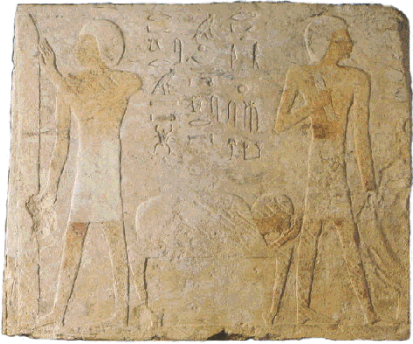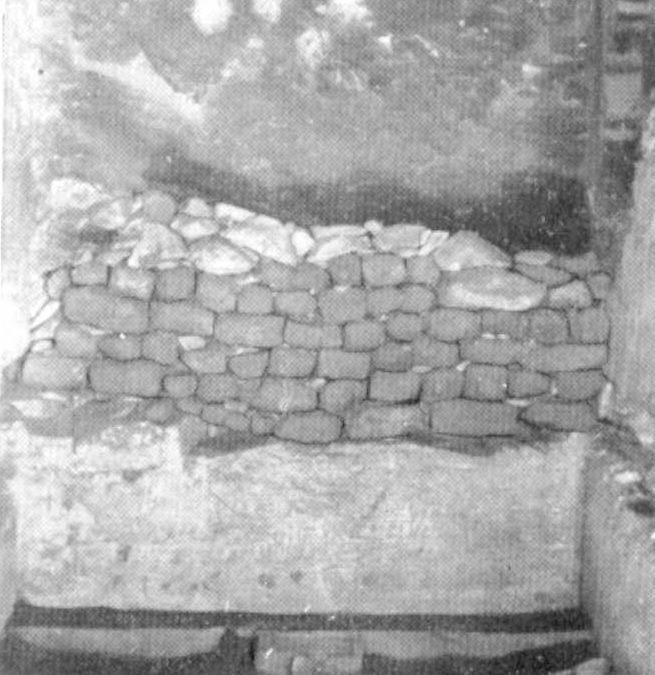 |
Duauneheh |
last update:
26.03.2008
|
Historical Data
| Name |
Title |
|
Origin |
Tomb |
Duauneheh
_wAwj-r-nHH |
1. Herold, Overseer of the Estate of Amun |
|
|
TT125 (P&M I-1, 237; at Scheikh Abd el-Qurna) |
| Parents |
|
|
|
|
| Father: |
|
|
|
|
| Mother: Ta(u)runet |
|
|
|
|
| Brother(s): |
|
|
|
|
| none known |
|
|
|
|
| Sister(s): |
|
|
|
|
| none known |
|
|
|
|

|
Floor plan of the tomb of Duauneheh, TT125, at Scheikh Abd el-Qurna
(P&M, Vol. I-1)
|
|
The tomb of Duauneheh, TT125, is located in the southern area of Scheikh Abd el-Qurna
and consists of a transverse hall, a long corridor which ends up in a
chapel with a niche. Today, the tomb is not only closed to the public
but also there are obviously no new publications about it. Due to the
references given in Porter and Moss, Vol. I-1, the last complete
description was obviously published by Säve-Söderbergh, T., in "Private tombs at Thebes", Oxford Univ. Pr., 1957-1963.
Therefore, no modern photos of the tomb are available.
|
|
The transverse hall impresses by a false-door on the left side wall
(position 4) and a stela on the right side wall (position 8). Both,
false-door and stela were directly hewn into the rock (Hermann, 1940). The
stela in the transverse hall of the Theban rock-tomb of the New Kingdom
was obviously the important place of "Offering Water" to the
deceased - as illustrated the basin found in the tomb of Duauneheh in situ
in front of the stela (see photo below).
|
| Wall with stela (Position 8 in the
floorplan of P&M), the photo shows the lower part of the wall with
the basin for "Offering Water" in situ (photo: Hermann, 1940,
plate 9b). |

|
Among other the relief in the traverse hall show the deceased and his
family, e.g. at the position 2 of the floorplan above the deceased is
shown hunting hippopotamus (see photo above; from Säve-Söderbergh, 1958; plate I)
|

| The passage to the chapel shows at positions 10 and 11
several registers with the funeral procession to the Goddess of The West
(pos. 10), among them a relief with a teknu (see photo above, today in
the Roemer-Pelizaeus-Museum, Hildesheim, Germany), and the Abydos pilgrimage
(pos. 11). |

|
This relief with two offering bearers originates from first from two
registers which are to be find on both sides of the doorway to the chapel (positions 15 and 16). Today this relief is
exhibited in the collection of the Kestner-Museum, Hanover, Germany (No. 1935.200.175). Everyone of the men carries a container locked with
ribbons. The inscription running vertical in front of each man describes the
procedure:
right text - "Bringing the stj-Hb-oil
for the First Speaker Duauneheh"
left text - "Bringing the Hknw-oil
for the Chief of the factories at the temple of [Amun] Duauneheh".
.
In the left inscription the name of Amun has been chiseled away which, since e.g. the name of the
tomb owner was not destroyed, points to the iconoclasts of the Amarna
period - obviously up to this time the tomb of the Duauneheh was accessible and probably intact.
|
|
Among the decorations found in rock-tombs at Thebes the "ritual
washing/cleaning" of the deceased is very rare. In this presentation
the deceased is shown standing in an alabaster slab purified by priests
pouring water and acclaimed by other priests. Although testified only in a
few tombs (from that time only from the tombs of Pui-em-Re, TT39, and
Amenmose, T42) the procedure was obviously not irrelevant as indicated by
the huge number of priests participating (below).
|
|
"Purification of the deceased on alabaster slab", purified
and acclaimed by priests (position 20 in the floorplan of P&M;
photo: Hermann, 1940, plate VIc). The inscription accompanying this scene
says "O Osiris Duauneheh, purified now you are in your
rock-tomb" (Hermann, 1940).
|
|
Due to Hermann the inscription indicates that this ceremony was part of
the introduction of the deceased into his tomb. By this ceremony the
deceased took the possession of the tomb. Since the deceased was already
mummified when he was introduced into the tomb the ceremony was
"executed" on the mummy, although the scene shows him as a
living person.
|
|
Niche in the chapel of TT125 with statues of deceased and two women (P&M position 21 in the
floorplan above, with small painted figures between the legs of the
statues ((photo: Hermann, 1940, plate Ib)
|
|
Part of the biography of Duauneheh, based an the German translation of Helck,
Urkunden 17, No. 149,
1961:
|
|
....[I have been the overseer of all work] in the holy temple "r.j-Hr-mrw-[Imn],
whose walls, pillars, and doors were made of ivory, ebony, and
SSD-wood,
with metal fittings of the finest gold of the foreign countries supplied
by the southern foreign country, the favorite place of her father, the
Lord of Gods, where many goods are aside to him and her garden, too. I
watch closely and did not sleep; I did not miss what I had been asked to
do. So I have been promoted to the Director of the Business, to lead the
slaves, the herds, the fields, the gardens, endowed with real estates,
calculated by efficiency, counted by it-grain,
and calculated by bd.t-grain of
the tribute given every year to the temple of Amun for life, [welfare,
health of the King of Upper and Lower Egypt,
MAat-kA-Ra,
may she live forever.
I have been in charge of the iwA-cattle,
wnDw-cattle,
Xt-aA-gees, Sd-geese
which were innumerable, many supplies of the best of (?), white fabric,
pk.t-fabric,
fabric of any kind, [as well as things, which had been in charge of the
Director of the Business, Director of the Barneries and the First Herold,
Duauneheh, justified.
|
|






